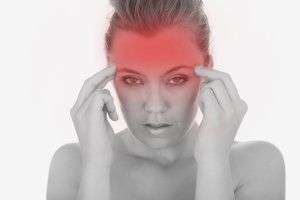
While no headache is pleasant, cluster headaches can be particularly uncomfortable. Sufferers liken the sensation to a hot poker being stuck in their eyes, and may even feel like their eyes are being shoved out of their sockets.
Cluster headaches get their name because they occur in a cyclical pattern. The cluster of headaches may last for weeks or months, with remission periods in between. They are also called “suicide headaches,” because they can drive sufferers to despair.
Symptoms
Cluster headaches attack quickly, often painfully awakening people in the middle of the night. Usually the pain focuses around one eye, but can radiate to the face, neck, head or shoulders. Symptoms include drooping eyelids, facial swelling, excessive tearing and a runny nose, usually on one side of the face. The pain and discomfort makes sufferers irritable. Often they pace back and forth. Lying down tends to increase the pain.
The duration of a cluster period varies. During a period of cluster headaches, the sufferer usually gets at least one headache per day, lasting between 15 minutes and three hours. Some sufferers have predictable cluster headaches, which present at the same time every day, or even during a certain season. Often they strike an hour or two after going to bed.
Risk Factors
Men are likelier victims than women, and usually develop this headache disorder between the age of 20 and 50. Smoking and drinking seem to exacerbate the problem. Genetics may also play a role. Researchers do not know the cause of cluster headaches, but suspect it could be linked to an abnormality in the hypothalamus. This part of the brain controls body temperature, hunger, thirst, fatigue and many other bodily functions.
Treatment
Several medications help people with cluster headaches. A doctor can inject the sufferer with drugs called triptans, which ease both cluster headaches and migraines, or with a synthetic hormone called octreotide. Local anesthetics can numb parts of the face. Inhaling pure oxygen often dramatically decreases the grip of cluster headaches within 15 minutes.
The doctor may prescribe a preventive treatment, such as regularly taking calcium channel blockers, lithium carbonate or corticosteroids, which suppress inflammation. However, these medications all have side effects. Taking 10 milligrams of melatonin nightly is a relatively safe intervention that helps some sufferers.
In rare cases, surgeons try to damage nerve pathways around the eyes. Newer treatments involve implanting electrodes in sufferers’ heads to block pain signals.
Because cluster headaches are so intense, the afflicted may feel desperate. Talking to a therapist or joining a support group may provide coping mechanisms.
Chiropractic Treatment for Cluster Headaches
Chiropractors restore necks to their proper alignment. A misaligned cervical vertebra can put pressure on the trigeminal nerve, which carries pain signals during a cluster headache. Sufferers might find help from an upper cervical chiropractic adjustment.
You chiropractor might prescribe exercises or make suggestions to improve your work station’s ergonomics. This assistance might also cut down on misalignments that could aggravate your cluster headaches.
If you suffer from cluster headaches, call our office today. We may be able to help you without the side effects of medications.
